The Portuguese Camino de Santiago requires physical preparation. After all, it's 260 kilometers between Porto Cathedral and Praça do Obradoiro in the Galician capital. But it's not as difficult as it sounds. All it takes is a few months of training before the big walk and you're ready to make the crossing. However, the route is made up of long stages, different terrains and inclines and descents. In this article we'll show you the best ways to prepare for the journey ahead and the precautions you should take to avoid injuries and the dreaded blisters on your feet.
How to prepare for the long stages of the Camino de Santiago
Physical preparation for the Camino de Santiago is very important because there are at least two stages that are over 30 kilometers long (to Ponte de Lima and Pontevedra). That means about 10 hours of walking or, to do the math, 39370 steps. So you need to have the physical and mental stamina to last until the end of the day without thinking about giving up. And we mustn't forget: during the walk we'll be carrying a backpack . How do we train endurance?
The smartest thing is to start slowly. Decisions to walk the Camino de Santiago can be sudden, but it's important to give your body at least a month to get used to long walks. Let's say you're working and don't have time to do a 20-kilometer daily walk. So try to dose your training in different phases.
Stage 1) 5 kilometers without a backpack .
You have to warm up your body to the idea that it has to move more often. Let's start slowly, 5 kilometers per workout. No backpack yet. As soon as you feel you can do more, increase the distance. One week should be enough for this introduction to exercise.
Stage 2) 10 kilometers with a backpack.
Take a walk of 5 to 10 kilometers, but now with the weight you need to carry in your backpack - there's a article on the subject, if you want to read it. That way your body gets used to carrying those extra pounds. However, don't go every day. In exercise, as in everything else in life, you need to rest in order to improve. Excess is the enemy of perfection and you can injure yourself. Two to three weeks tends to be enough at this point.
Stage 3) 15 kilometers with a backpack and on different terrains.
You're almost ready to hit the road. At the last moment of training we start to push our legs. Try 15 kilometers, if possible. Or, if you're brave enough, 20 with a rucksack! However, whenever you feel like you're overdoing it, stop! Don't strain your body too much. It's also a good idea to change terrain. It's best to simulate what you'll encounter on the way to the Galician capital so that you're not taken by surprise by the difficulty of the descents to Pontevedra or the climb up the Labruja mountain range.
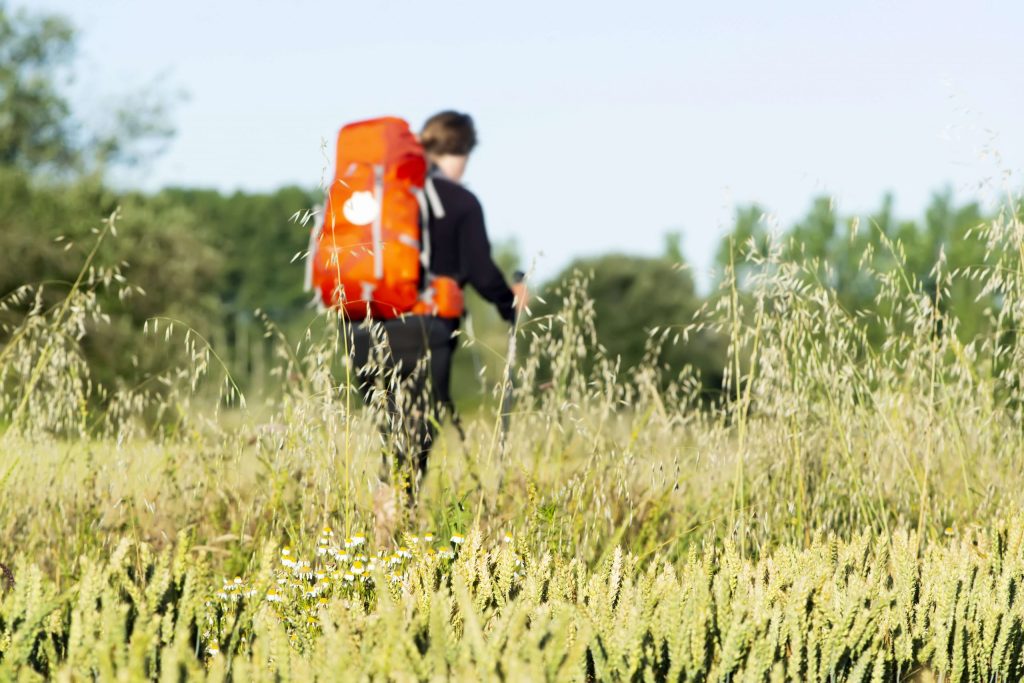
Physical preparation for the Camino de Santiago on different terrains
During the Portuguese Camino de Santiago you'll come across roads with tarmac, dirt, hills and valleys and, depending on the time of year, some mud. It's therefore important to understand how your body adapts to the different soils and the care you should take on each one. Take tennis or boots and follow this advice:
1) Tarmac roads.
If they're like this, cars will usually pass by. And in all places with cars, pilgrims need to pay extra attention. At these times, it's a good idea to avoid earphones or other devices that might distract us. We must see with our ears and hear with our eyes. All attention is short. You should always walk on the left-hand side of the road, so you can see the cars approaching. The road, however, turns out to be simpler. Apart from a few moments with more demanding elevations for our twins, there aren't many other indications.
2) Rammed earth
The most important thing to bear in mind when traveling on this type of road is the possible lack of grip that our sneakers or boots may have. So you have to be careful of the small stones you find along the way and keep a strong, careful stride so that you don't slip at inopportune moments.
3) Hills with ascents and descents.
Most of the routes on the Portuguese Camino de Santiago take place between mountains and hills with high altitudes - like the Labruja mountain range. For this reason, the descents can also be long and sometimes even more complicated than the ascents. As with the dirt tracks, it's important to pay attention to where you place your feet when you walk. One wrong step can be enough to risk serious injury. If you live in an area with mountains or hills, such as Sintra, it is possible to practice in these places. There are plenty of hiking groups to help.
Physical preparation for the Camino de Santiago
One of the most annoying things about the Camino de Santiago is the blisters on your feet. These happen because of the friction between the skin and the fabric of the shoes you've decided to wear. Often, when sneakers or boots are new, they are tighter. Commonly said: "they're not used to your foot". This causes, as you can imagine, greater contact between the skin and the fabric and leads to (more) blisters. The advice we can give you is this. If you have to buy new shoes, at least train in them. You don't want unnecessary blisters!

One more piece of advice for the road ahead.
The Camino de Santiago is not a sweet pilgrimage. For those who aren't used to exercising and walking, it requires rigorous physical preparation. To better prepare yourself and know what awaits you on the trail between Porto and Santiago de Compostela, take a look at the stages we have on the website. They will help you plan your training sessions, as there are descriptions of the terrain, the times and even the gradients at each point.
Come and discover the starting point for the Good Way!
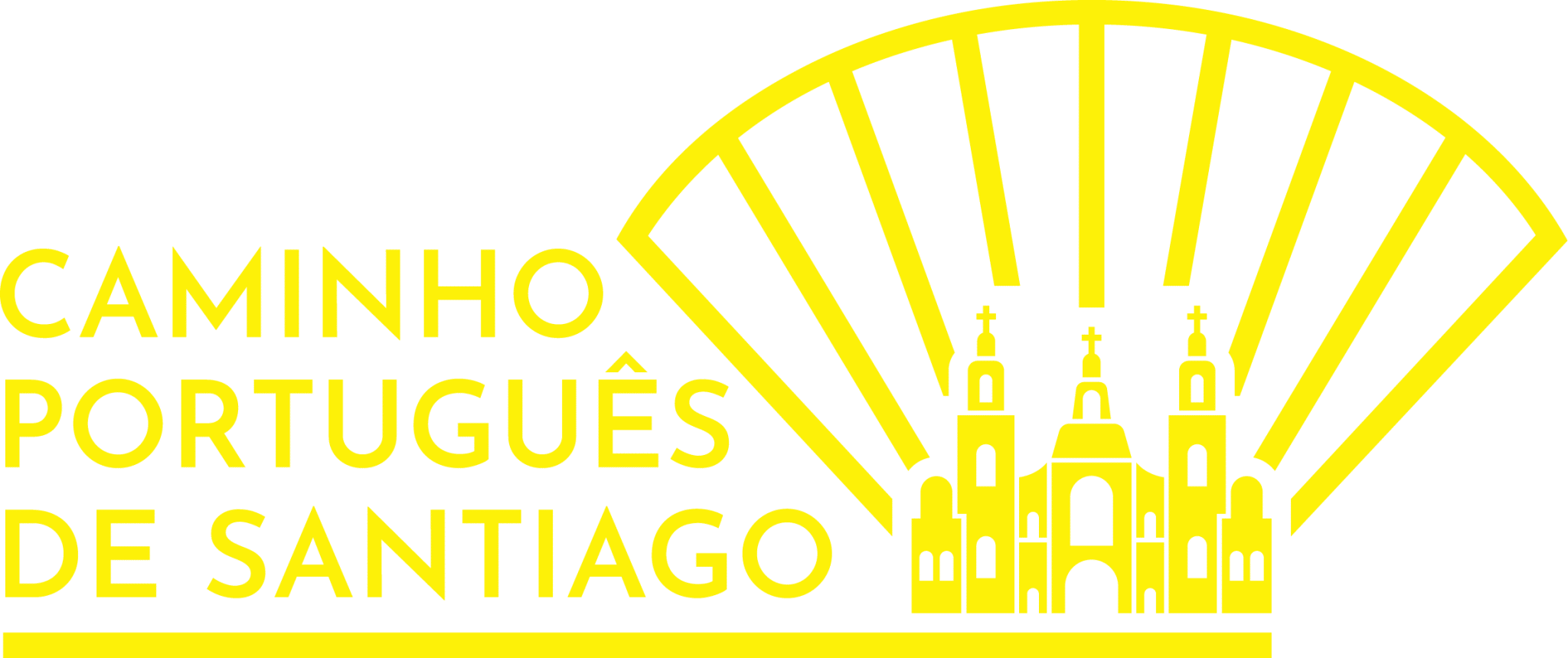



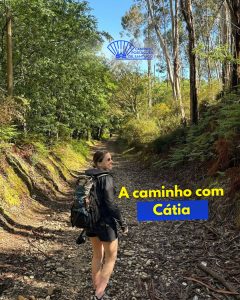
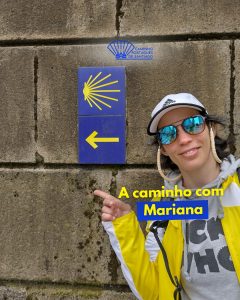
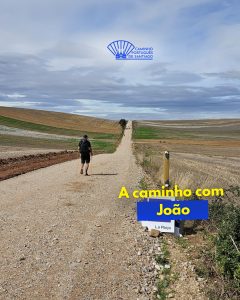
I really want to do this Portuguese route between Porto and Santiago de Compostela, but I don't want to do it alone. Is there an interactive agenda where I can join a group? I've already done the 310 km between Águas da Prata and Aparecida and thanks to the interactive agenda I've joined up with three other people.
Great warnings. I'll incorporate them into my preparation practices.
Great tips! I've been hiking for 30 days and this past week I did 20km with my backpack on. I'm starting my hike on May 21, so I hope all the preparation has been enough!
Good afternoon,
I intend to do the route from Braga on June 10, can you help me with a plan that allows me and my wife to do the route and our luggage to be transported by you to the accommodation?
Regarding accommodation, we intend to stay in hotels in a single room with bathroom, with dinner and breakfast, do you also provide this service?
thank you for your cooperation.
thank you, Luis Ferreira
I want to receive information
Travel planning
Excellent tip. I would only add that you should buy waterproof sneakers or boots. I completed this route on June 11/22 and during the rain, my feet got wet and gave me blisters. If possible, buy waterproof shoes and wear them when you train so that they mold to your feet. The rest is enjoy your time and Buen Camino !!!
Good afternoon
I would very much like to do the route, but it has to be from the city of Guarda to Santiago. Is there a route you can give me and more information?
Is there a group that does the route?
Thank you